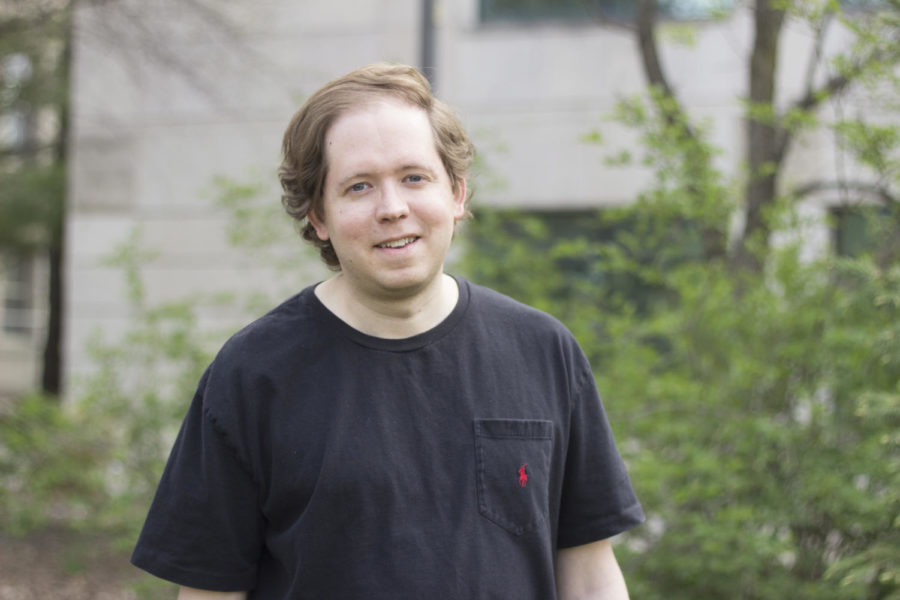Student introduces relaxation as a sport
Jessica Darland/Iowa State Daily
Colt Bayard, a graduate student, is creating a club about relaxation and advancing people’s health. He is also writing a book about relaxation as a sport.
April 29, 2015
Colt Bayard is trying to introduce a new sport to ISU students — the sport of relaxation.
With his new relaxation club, Bayard said he hopes to increase the knowledge of scientifically proven relaxation techniques that actively reduce stress levels.
“When you’re watching TV you need to focus and suspend your disbelief, so you don’t give your eye muscles a chance to relax,” Bayard said. “That sort of relaxation is really more recreation.”
During its weekly meetings, the club’s members use an electromyography or EMG, in which they attach metal discs to a subject’s head, using them as electrodes to track the muscle tension in the head and neck. The brain constantly sends electric signals throughout the body in order to designate muscle movement. When human beings are stressed, they physically show this through subtle muscle movements, creating muscle tension. EMG uses the amount of muscle tension in the body to measure the level of stress the subject has.
“When you think of the Eiffel Tower with your eyes closed, your eye muscles will look up and down, or if you think of a car driving down the street, your eyes will move left and right,” Bayard said. “When human beings are stressed, our brows tend to furl.”
With a clear reading on the subjects’ stress levels, the group then proceeds to perform stress reducing exercises, such as controlled patterns of breathing or mental exercises to increase recognition of one’s physical self.
“When people start out, you see that they actively need to try to relax,” Bayard said.
To increase the use of these methods, the club will try to turn this process into a one-on-one sport, where the two competitors will compete to reduce stress levels as far as possible, Bayard said.
“You’re developing a skill in the same way you golf or bike, if you practice, you will improve,” Bayard said.
Bayard’s club is not the first entity to introduce scientific relaxation practices. The Biofeedback Services in the Student Counseling Service building has showed students similar techniques to reduce stress levels since 2010.
“It’s so powerful to see that students can actively do something to reduce stress and see it,” said Sarah Anthoney, coordinator for Biofeedback Services. “The students really take to seeing actual scientific proof that these exercises work.”
At the biofeedback orientation this year, 540 students attended, with 760 hours of training logged in, according to the biofeedback center records. The types of biofeedback available in The Biofeedback Center include heart rate variability and skin conductance training. Michael Johnson, graduate student in chemical engineering, said he feels these practices are important to any student.
“Not knowing what feedback you have on your stress level is like taking a class and not having some sort of evaluation,” Johnson said. “There’s no way of knowing if you’re benefitting at all.”

















